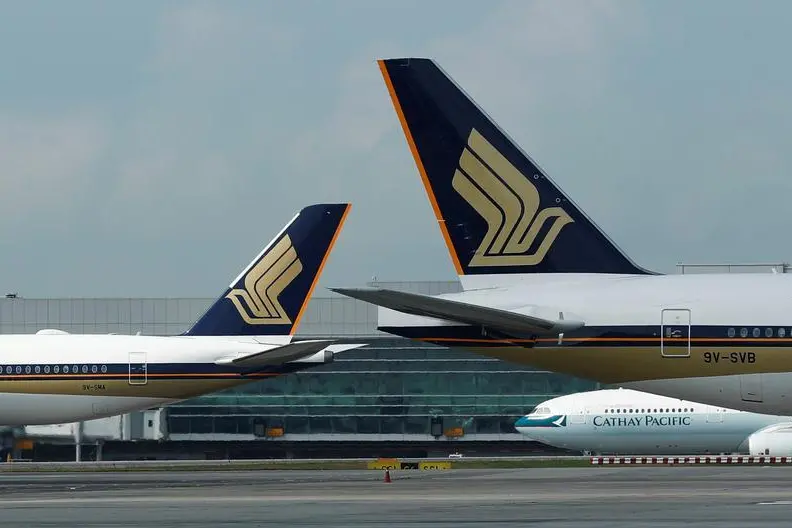PHOTO
SINGAPORE - Singapore Airlines may be flying back towards Malaysia. The $8 billion flag carrier plans to deepen ties with its struggling Kuala Lumpur rival. Tighter cooperation in areas including cargo and maintenance could be the first step towards merging again, nearly 50 years after the two broke up.
Until 1972, well after Singapore's split from newly independent Malaysia, the two countries had a single carrier: Malaysia-Singapore Airlines. They separated when the ambitious southern partner sought to expand overseas routes, while larger Malaysia wanted to expand at home.
The agreement unveiled on Thursday is vague, and contemplates a wide-ranging partnership, with no equity exchanged or other financial commitments. It is a potential first step in that direction, however, assuming the two state-backed entities can overcome political animosity to work together on everything from mechanics to codeshare flights, with subsidiaries from both sides in the mix.
Cooperation makes sense. Malaysia Airlines is reeling from the 2014 disasters that prompted it to be nationalised again. It is also under pressure from discount rivals such as AirAsia. The new government of Prime Minister Mahathir Mohamad has signaled it would consider a sale, but buyers have not exactly been queuing up. Japan Airlines, for one, has settled for a partnership.
Deeper links would help Singapore Airlines, as well, strengthening its hand in competition with low-cost rivals in a booming region. It could make better use of Malaysia's pricey A380s too.
Getting even closer will be tough, though. First, the two airlines would have to decide how far they want to go. A next step could involve cross-shareholding, to align interests while retaining two brands. To go further, the complex ownership and control restrictions – which affect air services agreements between states, for example – would require careful consideration. A holding structure is one possibility. Separating Malaysia's international and domestic businesses would be another.
Then there are the messy politics. In particular, Malaysia under Mahathir has been belligerent with its southern neighbour. He may, however, prefer to keep his flag flying, even if it means having an uncomfortable partner. Singapore, meanwhile, could judge the hinterland and collateral benefits for the city-state, such as secure water supplies, are worth the trouble too.
CONTEXT NEWS
- Singapore Airlines and Malaysia Airlines said on June 27 that they had signed a preliminary agreement to explore a wide-ranging partnership that could include codeshare flights, cargo and aircraft maintenance.
- The Malaysian government said in March that it was considering whether to shut, sell or refinance its loss-making flag carrier.
- The two airlines began as one before both countries were independent, becoming Malaysia-Singapore Airlines until they eventually split in 1972.
- Malaysia Airlines signed a memorandum of understanding with Japan Airlines on May 27 for a joint venture on Malaysia-Japan flights. The Japanese carrier later said the two could expand that partnership.
(The author is a Reuters Breakingviews columnist. The opinions expressed are her own.)
(Editing by Jeffrey Goldfarb and Katrina Hamlin) ((clara.ferreira-marques@thomsonreuters.com; Reuters Messaging: clara.ferreira-marques.thomsonreuters.com@reuters.net))












